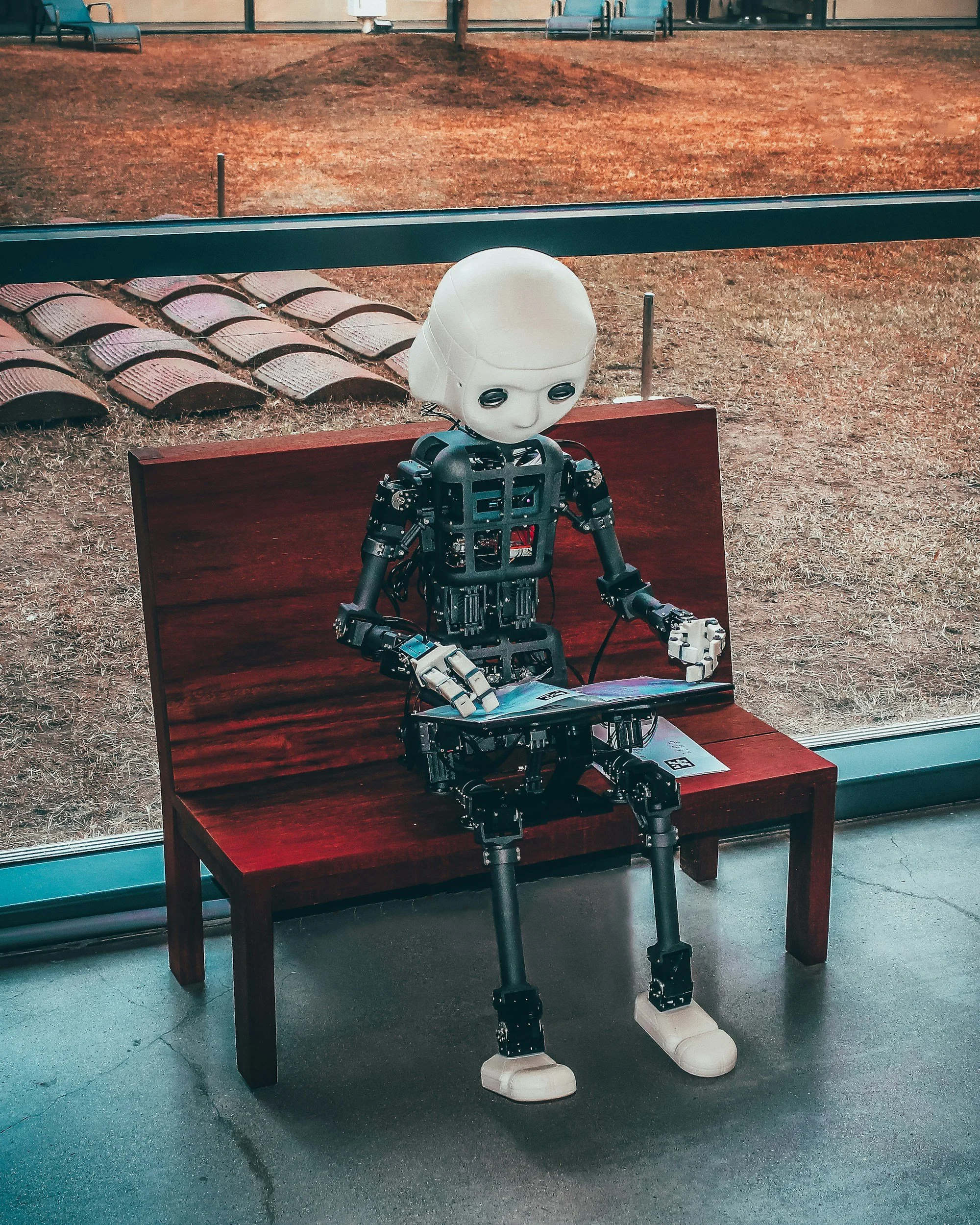Artists Facing Artificial Intelligence
In the era of Artificial Intelligence, how artists can protect their style and authenticity ?
Image credit: Squarespace Free Images.
Without a doubt, you can sense it just as I do, AI has become a word float like air in cafés, studios, and living rooms.
Some cling to it with certainty.
Some would like to simply put the window shut.
Between murmur of opinions and emotions, one question hang in the air :
What happens to human creations as machines start observing their behavior and imitating it?
When the lines of an artist are reflected in a machine that has never dreamed, has never doubted, something need to be questioned; What is the value we really put in Art? The technique? Or the sensitivity that gave it actual life?
Johan McCarthy (1927-2011) : Artificial Intelligence
1. what do we mean by “intelligence”, first of all ?
I think it is useful to return to the source. Before art, before technique, before the debate, just the word itself. A word determined by centuries of human experience. Something that is a word built on intuition, learning, and memory…
And then one day, in the mid-20th century, when John McCarthy and his colleagues set up the field, researchers added this incredibly human word to metal, formulas, data. Was it ambition? A tribute? Or the start of a misunderstanding?
The word remained. As it moved, however, from the human world to the machine-world, it took on entirely different connotations.
So what is intelligence for here?
When applied to humans, it speaks to consciousness, sensitivity, a living inner life. Applied to machines, that means calculation, association and recognition. Two very different realities, one held together by the same word out of convenience … or confusion.
A machine does not think, it processes. It doesn’t comprehend, it aligns patterns. It lacks lived experience, lacks intuition, lacks desire.
And perhaps that’s the heart of our confusion and the source of our anxiety:
we have one word for two kinds of “intelligence”.
2. So, how does AI work? How does it learn a style?
Artificial intelligence watches the world through the lens of a thousand paintings at once.
Sure, it is amazing, but it never touches what the artist experienced while creating them. It understands nothing of the anxiety behind a failed gesture, nor the silent happiness of a flawless stroke, neither what the artist is telling a story about. It just detects patterns, identifies repetitions and plots colors.
And behind this mechanical gaze, there isn’t an isolated, thinking entity.
There are humans. Many humans.
Of course, engineers and researchers, but also thousands of invisible workers who annotate, sort, correct and filter. Hands helping bring order to chaos. Eyes identifying. Minds organizing. Sometimes far from the light, sometimes in precarious conditions
AI is not an autonomous mind. It is a grand collective construction, a human fabrication beneath an algorithmic veil.
Recognizing this already makes art go back to its true roots.
“While artists try to protect their lines, lawyers try to protect the lines of the law. And in between, the machines keep learning.”
3. How artists can protect their copyright right now
Copyright law looks on at this evolution somewhat warily. These laws were never designed for models that could absorb a million images overnight. Now, they are, through their choices, trying to reshape themselves, reinvent themselves, make sense of this new reality.
But while the law is seeking a balance, artists need to act on this, and protect what makes their voice different.
So what can an artist do right now, in the middle?
New tools are emerging. New initiatives are emerging. And one of them is Glaze.
What is Glaze and why is it important to you as an artist?
Glaze is a free software from the University of Chicago (SAND Lab) meant to help artists preserve their visual style from being copied or imitated by generative-AI systems.
In a time when AI models can learn from datasets of large images, by learning to copy both broad styles, and very particular individual artists’ signatures, Glaze provides a means of resisting style theft.
5. While there still is so much to learn and say, here is our collective responsibility
Finally, this is a story written not solely for artists, engineers or legal scholars. It belongs to all of us. Because a machine doesn’t create by accident; it responds. It doesn’t serve itself; it is summoned. And this is the quiet but massive obligation we have.
So the basic question is:
Whom exactly are we valuing when we select an image? The technical quality of an algorithm? Or the feeling from this simple gesture of a human hand, which hesitated and insisted and breathed?
So when we hang a painting, or a poster, or an illustration, in our home, are we looking for a neat, pristine, finished piece, smooth as an electronic surface? Or are we looking for a connection, a presence, the fraction of human life that exists but is still dancing off the image here?
Art has never been a mere form. It is a passage. The invisible bridge from one inner world to another.
A machine may mimic the pattern, yes. But never the passage. Never the sensitive crossing. Never that instant when art is a bridge between two lives.
We all have a collective responsibility in our own way;
to decide what we want to empower. To choose, with our gestures and purchases, whether we support a form without an author, or the voices that do make, with their breath, fatigue, joy and vulnerability.
As long as we still look for emotion, at least as long as we look for the human in that image,
What artists offer the world and art will never be substituted by a machine.

